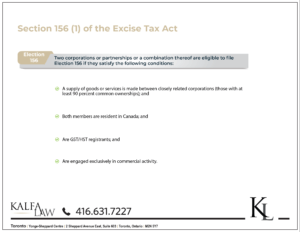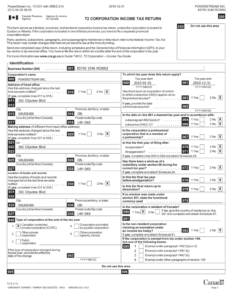The Agreement of Purchase and Sale – Fundamentals that Every Buyer and Seller Should Know
The purchase and sale of a business is a complex transaction requiring legal counsel to provide guidance and advice throughout the process. This includes negotiating and drafting the underlying purchase agreement, assisting with satisfying conditions and preparing and negotiating closing documents.
The purchase and sale of a business can be broken down into two steps:
- An Agreement of Purchase and Sale must be signed.
- Closing documents must be prepared to give effect to the transaction on the agreed upon Closing Date. These will include certain key agreed upon terms included in the purchase agreement (e.g. non-competition agreement).
Step One – The Agreement of Purchase and Sale
The Agreement of Purchase and Sale (“APS”) is a binding contract between the purchaser and seller that obligates the purchaser to buy and the seller to sell assets or shares of a corporation subject to the terms and conditions in the APS. The APS will include terms such as the purchase price, representations and warranties, conditions, and the closing date.

When a purchaser is buying assets, the APS is called an Asset Purchase Agreement; when the purchaser is buying shares, it is called a Share Purchase Agreement.
Whether assets or shares of a corporation are being purchased (See our article: Asset sale vs. Share sale), the first step is to negotiate and draft the APS. The APS is occasionally prepared by real estate agents, brokers or even the parties themselves. However, it is customary and recommended that lawyers are retained to prepare or at least review the APS prior to the parties signing. At this stage, the buyer and seller will likely have entered into preliminary discussions regarding the key terms (e.g. purchase price, asset or share sale) or may even have drafted a non-binding letter of intent outlining all the key terms. The lawyers are then tasked with negotiating and ironing out the details of the APS. The parties must also agree on a closing date, which is the date that the transfer of ownership will officially occur. The closing date often occurs 30 to 60 days after the APS is signed but this will vary depending on the circumstances of the parties.
Step Two –Closing Documents and Conditions
In Step Two, the lawyers will work with the clients towards closing by first (a) assist with satisfying all of the conditions and second (b) prepare and negotiate the closing documents.
A. Conditions
In most APS, the completion of the transaction is conditional upon the satisfaction of certain conditions (or the parties waiving such conditions). The following are three commonly included conditions
- Due Diligence
- Once the APS has been signed, the purchaser will be provided a certain amount of time to perform financial and legal due diligence of the business. Financial due diligence involves reviewing the financial statements of the target business to ensure that it is a viable business and the financial position of the business justifies the purchase price. Whereas the purpose of legal due diligence is to assess the risks and obligations of the business. For example, the purchaser will likely assume the existing lease of the business on an “as-is” basis so it is important to review the lease to identify any red flags.
- Financing
- The transaction will often be conditional on the purchaser securing financing on satisfactory terms and conditions. At this stage, the purchaser will likely have had at least preliminary discussions with lenders regarding financing this transaction.
- Landlord’s Consent
- If the business operates out of a leased premises, the parties will be required to obtain landlord’s consent. If the transaction is structured as an asset sale, the landlord will have to consent to assigning the existing lease to the purchaser. In a share sale, the landlord will have to consent to the change of control of the corporation. It is important to review what is required under the lease.
The purchaser will typically have a conditional period anywhere from five to twenty days after the APS has been executed to perform due diligence and secure financing.
B. Closing Documents

After all the conditions have been satisfied or waived, the transaction is now considered firm. This means the parties will work towards closing and the lawyers will prepare and negotiate all of the closing documents required to legally effect the transfer of the business.
A purchase agreement is merely an agreement to sell the business at a certain date in the future. On the closing date, closing documents must be exchanged between the purchaser and seller in order to effect the sale. For example, a Bill of Sale is a closing document that is required to legally transfer the assets of a business from the seller to the purchaser on the closing date. The APS alone does not transfer the assets – it merely states that ownership of the assets is to be transferred by way of a Bill of Sale on closing. The business will also require various permits or licenses for its specific type of operation.
The complexity of preparing and finalizing closing documents is clearly apparent when you consider the following requirements when closing a share sale (Note: the applicability of each document will depend on the transaction):
- Authorizing Resolution of Corporation to enter into Agreement
- Consent to transfer of Shares
- Resolution of the Board of Directors of the Corporation authorizing the transfer of shares
- Instruments of Transfer
- Endorsing of Share Certificates
- New Share Certificate in favour of Purchaser
- Completion of ledgers and registers in the minute book of the Corporation showing the Shares in the name of the Purchaser
- Certificate of Incumbency
- Resignation of Vendor as director and officer
- Resolution re election of Purchaser s director and officer
- Indemnity Agreements
- Release
- Solicitor’s Opinion
- Acknowledgement and Release by employees
- Section 116 of the Income Tax Act statutory declarations by the Vendors and Pas to their age and Canadian residency
- Section 116 of the Income Tax Act statutory declarations by Purchaser as to residency
- Certificates of Representation and Warranties
- Undertaking by Vendors’ solicitors to withhold closing funds to pay off debts and obligations
- Discharge of all Personal Property Security Act registrations against the Corporation (or a letter from the Secured Parties in all such PPSA registrations confirming that such registrations will be discharged)
- Non-Competition Agreement
- Direction re Funds
- Statement of Adjustments
- Undertaking to readjust
- A Receipt for payment of the purchase price
- Certificate of Status of Corporation
- Form 1 Notice of Change
In an Asset Sale, a common list of closing documents required to be prepared are:
- Purchaser’s certified copy of Resolution of Directors
- Purchaser’s Certificate of Representation and Warranties
- Purchaser’s Statutory Declaration re residency
- Purchaser’s Certificate of Incumbency
- Purchaser’s Certificate of Status
- Vendor’s certified copy of Resolution of Directors
- Vendor’s Certificate of Representation and Warranties
- Vendor’s Statutory Declaration re residency
- Vendor’s Certificate of Incumbency
- Vendor’s Certificate of Status
- Undertaking to Readjust
- Joint Election under s.167(1) of the Excise Tax Act
- WSIB Purchase Certificate
- Vendor’s Clearance Certificate pursuant to s.6(3) of the Retail Sales Tax Act
- Section 116 of the Income Tax Act statutory declaration by the Vendor as to Canadian residency
- Promissory Note
- General Security Agreement
- Assignment of Lease Agreement
- Assignment of general contracts
- Notice of Termination of Employees
- Offer to Hire Employees
- Assignment of Trade-Name
- Assignment of Telephone Number
- Assignment of Website, Social Media Accounts and other Intellectual Property
- Non-Competition Agreement
- Bill of Sale
- Statement of Adjustments
- Receipt
A couple of notes on the following documents:
1. Non-Competition Agreements
In an asset sale of purely goodwill, which occurs where a business sells its client lists and trade name, it is crucial for the deal to include a non-competition agreement. This is because the entire purchase price is predicated on the goodwill of the seller. There are no hard or physical assets such as products, equipment or inventory, which make up the value of the business. Goodwill of a business is typically intimately tied to the seller, who has generated that goodwill in the marketplace. If he or she were to continue to operate a similar business, the value of the goodwill being purchased is reduced to zero, effectively destroying your purchase.
For example, an insurance broker wishes to sell his or her list of clients–the broker’s goodwill–for $50,000. The purchaser does so in the hopes that the clients on the list will continue to use the purchaser as their insurance broker. Typically in these circumstances, the seller will introduce the purchaser to the clients and indicate that the purchaser is his or her successor to encourage the clients to continue to purchase insurance from the purchaser.
If the seller doesn’t sign a non-competition agreement in connection with the goodwill sale, he can simply open up shop across the street and continue to sell insurance. Of course, all of company’s existing clients will go across the street and purchase insurance from the seller, with whom they already have a relationship. The purchaser will have purchased goodwill for $50,000 that has been reduced to zero.
For this reason, non-competition agreements are crucial in goodwill sales and are extremely important in hard asset sales as well.

2. The Termination and Hiring of Employees
Employees usually represent another contentious item when negotiating an asset purchase. Under law, when the assets of a business are sold to a new purchaser, all of the employees become successor employees to the purchaser. This means that all of the employees’ liability, such as their work history, vacation pay, termination pay, and severance pay entitlements are transferred to the purchaser. If the purchaser wishes to terminate an employee after 6 months of buying the business, the purchaser will have to pay the employee termination pay representing the entire time the employee was employed by the previous business. Without provisions in place to protect the purchaser, the purchaser could potentially have to pay a large bill in termination pay to an employee.
As a result, a purchaser will typically demand that the seller terminate all of the employees’ employment with the business, effective the closing date. The purchaser will require that the seller pay the employees all their statutory rights in respect of this termination, such as termination pay, severance pay and accrued vacation pay.
The purchaser will then offer employment to the employees on substantially the same terms as the previous employment. The employees will start to work for the purchaser effective the closing date, and the purchaser will only be liable to the employees for vacation, termination pay, and severance pay from that day forward.
Because the seller will be saddled with a large payout to his/her employees, the seller may wish to increase the purchase price to reflect these liabilities. Given that the seller’s and the purchaser’s interest are fundamentally at odds, the issue of employees typically becomes a contentious issue when negotiating an asset sale.
3. Seller’s Indemnity
One of the most difficult discussions in negotiating a purchase and sale agreement will concern the seller’s indemnity and any limitations of the liability assumed by the purchaser. An indemnity protects the purchaser against damages suffered due to breaches of the seller’s representations, warranties, and covenants. At the same time, the seller will want to limit his indemnity liability to the purchaser.
A seller’s indemnity clause is a contractual provision in which the seller agrees to protect the purchaser from “all liabilities, claims, and demands” that may arise due to breaches of representations or non-performance of covenants made by the seller.
Limited Liability
The seller will likely want to limit his liability, however. This will involve the inclusion of a survival period, language qualifiers, and monetary limitations.
a. Survival Period
A survival period limits the time period a buyer can commence litigation for breaches of representations, warranties, or covenants. Common ranges of survival periods are 12 to 36 months for general representations and warranties, six months following the expiration of the limitation period for tax matters, and six months following the expiration of the applicable limitation period of fundamental representations and warranties, such as authority to enter into the purchase agreement and title to the assets.
b. Language Qualifiers
Other methods used to limit the seller’s liability include language qualifiers, such as “to the best of my knowledge” and “in all material respects,”. For example, “to the knowledge of the seller, the premises contain no asbestos” and “the seller complies, in all material respects, with applicable laws.”
The purchaser, therefore, should avoid these qualifiers that limit the seller’s liability, as not doing so would result in shifting the indemnification risk from the seller to the purchaser.
c. Monetary Limitations
The Purchase and Sales Agreement can also limit the seller’s liability by stipulating the maximum amount that a seller has to pay where there is a breach of the representations, warranties, and covenants made. The limit might be an amount equal to the purchase price or a percentage of the purchase price. Or there might be limits on indemnification specific to certain types of loss, i.e., breaches of general representations and warranties will incur a payout to a maximum of 30% of the purchase price, while breaches of environmental representations and warranties incur a payout up to 50% of the purchase price. For fundamental breaches such as title to the shares or assets, the limit is often not less than the purchase price.
Where the purchase price is a substantial amount, claims for indemnification may be subject to a “basket” (also sometimes referred to as a “deductible”). If so, the seller will not be responsible to the purchaser for any indemnification payment unless damages reach a certain amount. Once the basket is reached, the seller is responsible for all liabilities in excess of the basket amount.
3. Corporate Resolutions
One of the duties of the directors of a corporation is to approve agreements, contracts, leases and other documents that the corporation will enter or has entered into with other parties.
a. Elements of a Directors’ Resolution to Approve an Agreement
The corporate by-laws will outline clear instructions for how directors will pass resolutions to approve agreements. A directors’ resolution will lay out the following:
- Recitals (these describe what the agreement or matter is about and what the directors hope to achieve by the approval)
- Approval of the Terms and Conditions of the Agreement
- Approval of the form of Agreement
- Approval of the authorized signing authorities who can sign the agreement on behalf of the corporation
- Approval of the delivery of the agreement by the authorized signing authorities
- A catchall phrase
b. Examples of the Elements of a Directors’ Resolution to Approve an Agreement
The Recital:
The following is an example of language commonly used in the recital portion of Purchase and Sales Agreement:
“WHEREAS the Corporation wishes to enter into an agreement of purchase and sale (the “Agreement”) among the Corporation, 5213672 Ontario Inc. (“5213672”), and John Doe dated the 10th day of July, 2019, pursuant to which the Corporation shall purchase from 5213672 all of the assets of a business known as “Coffee Kraze”.
Approval of Terms and Conditions
The following is an example of the language commonly used in a Directors’ Resolution to approve an agreement’s terms and conditions:
“NOW THEREFORE BE IT RESOLVED THAT:
The entering into of the Agreement by the Corporation, pursuant to the terms and conditions thereof, is hereby approved.
Signing Authority for a Directors Resolution
The by-laws of a corporation determine who can sign agreements on behalf of a corporation and whether those persons—usually directors and/or officers—can appoint someone else to approve an agreement.
The following is an example of the language commonly used in the Signing Authority portion of a Directors’ Resolution:
“Execution of Instruments – Deeds, transfers, assignments, contracts, obligations, certificates and other instruments may be signed on behalf of the Corporation by any officer or director of the Corporation. In addition, the board may from time to time direct the manner in which and the person or persons by whom any particular instrument or class of instruments may or shall be signed. Any signing officer may affix the corporate seal to any instrument requiring the same.”
Catchall Phrase:
The final clause in a directors’ resolution to approve an agreement is the catchall phrase. This gives the authorized signing authority the right to execute all other ancillary documents that may be required to implement the transaction contemplated by the Agreement.
Below is an example of a catchall phrase:
“Any officer or director of the Corporation be and is hereby authorized and directed to do all acts and things and to execute or cause to be executed all such instruments, agreements and documents as in his opinion may be necessary or desirable to complete the transactions contemplated herein.”
Statutory Declarations and Filings With the CRA
Making statutory declarations and filings with the CRA so that your income tax return reflects your and your business’ new status. The following are some of steps that you should take when you have bought a new business.
- Apply for new business number (BN) and new CRA program account
- If you want to change the legal ownership or the structure of your business (eg. From sole proprietorship to partnership), you will have to register for a new business number and new CRA program account.
- Authorize a representative for your new business, who will have access to all or some of your CRA program accounts
- Notify the CRA of any changes to your business address
- Change of legal status, from one type of business structure to another type. For example, did the purchase of a new business change your status from a sole proprietor to a corporation?
- Change of fiscal year-end, which depends on whether your business structure is a sole proprietorship, partnership, or corporation
- Change of owner, director, or partner named on the business
- Change of legal business name, the name of the owner or corporation, and operating name, the business name that is used in the public sphere
- Change of business activity, eg. A “home renovator” buys a construction business must notify the CRA that his business activity is now a “homebuilder.”
- Make Payroll account changes
- Register a new GST/HST account and include the names and SIN number of at least one of the new owners, directors, or partners on a new GST/HST account; and register the new business activity, if applicable, on the new GST/HST account.
- Valuate inventory
If the individual asset prices are not set out in the contract, you have to determine how much of the purchase price you should attribute to each asset, how much to inventory and how much, if any, to goodwill. The amount you allocate to each asset should be its fair market value (FMV). You should allocate to goodwill the balance of the purchase price that remains, after you allocate the FMV to each asset and to inventory.
Agreements of Purchase and Sale, Letters of Intent, and closing documents are complex. Hiring a qualified lawyer who is experienced to guide you through a corporate and commercial transaction is crucial to protect your rights. The lawyers at Kalfa Law Firm handle a variety of business transactions on a routine basis. With our combined tax and corporate law experience, our lawyers anticipate complex corporate and tax issues and formulate optimal solutions that forward your interests in obtaining the highest valuation for your business and paying the least amount of tax possible.
-Shira Kalfa, BA, JD, Partner and Founder
Shira Kalfa is the founding partner of Kalfa Law Firm. Shira’s practice is focused in corporate-commercial and tax law including corporate reorganizations, corporate restructuring, mergers and acquisitions, commercial financing, secured lending and transactional law. Shira graduated from York University achieving the highest academic accolade of Summa Cum Laude in 2012. She graduated from Western Law in 2015, with a specialization in business law. Shira is licensed to practice by the Law Society of Ontario. She is also a member of the Ontario Bar Association, the Canadian Tax Foundation, Women’s Law Association of Ontario, and the Toronto Jewish Law Society.
© Kalfa Law Firm 2020














